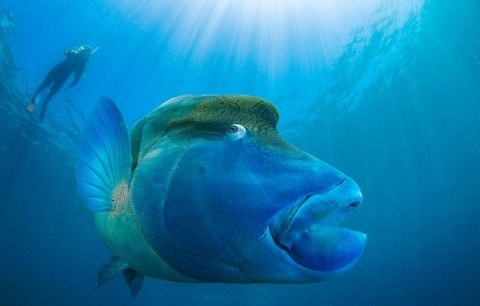
La 10e « Indo-Pacific Fish Conference » se tiendra du 2 au 6 octobre 2017 à Tahiti, Polynésie française.
Eric Feunteun, professeur MNHN (UMR BOREA, équipe 5, Dinard) et Philippe Keith, professeur MNHN (UMR BOREA, équipe 4, Paris) animeront la session* : “Diadromous fish and leptocephali of the Indo Pacific: biogeography, ecology and conservation”, mardi 3 octobre 2017.
Parmi les communications orales de cette session :
Philippe Keith, professeur MNHN (UMR BOREA, équipe 4, Paris) :
"Spatial distribution, trophic ecology and growth of three tropical eel species (Anguilla marmorata, A. megastoma and A. obscura) living in sympatry in Gaua island (Vanuatu Archipelago)." résumé (page 345)
Eric Feunteun, professeur MNHN (UMR BOREA, équipe 5, Dinard) :
"The leptocephalus larvae/marine snow food-web theory: pros, cons and uncertainties after 20 years of investigations in the lndo-Pacific". résumé (page 351)
"Spatial-temporal variability of leptocephali trophic networks in the South Pacific Ocean" résumé (page 347)
Marion Mennesson, chercheure contractuelle, (UMR BOREA, équipe 4, Paris) :
"Phylogeography of Eleotris fusca (Teleostei: Gobiodei: Eleotridae) in the Indo-Pacific area reveals a cryptic species in the Indian Ocean" résumé (page 344)
Clara Lord, maître de conférences MNHN, (UMR BOREA, équipe 4, Paris) :
"Indo-Pacific clinging goby (Sicyopterus) mouth morphology: evolutionary point of view based on mitogenomic phylogeny" résumé (page 342)
*Description de la session : Diadromous fish are widely distributed in the Indo-Pacific region. They share common biological traits that lead them to undertake migrations from inland to marine habitats during their life cycle. Diadromy occurs mainly as (i) catadromy (growth in fresh or brackish inland waters and spawning in marine habitats) and major groups as eels (Anguillidae), Kuhliidae or Mugilidae and (ii) as amphidromy (growth and reproduction in inland fresh or brackish habitats, and larval stage at sea (Sicydiinae, Eleotridae,…). Diadromous fish are present in most inland habitats accross the entire region and they may be the only native fish species in most volcanic islands. Some species are wide spread as the giant mottled eel (A. marmorata) and the Sicydiinae Sicyoterus lagocephalus, while others are endemic, which opens to phylogeographical considerations. The ecology and biology, mainly during their marine stages, of most species remain widely unknown despite recent scientific progress. The marine larval stages, including leptocephali of anguilliforms represent the key to dispersion mechanisms of diadromous fish. There is also a strong management issue because diadromous species are often threatened or of unknown status while they are of fundamental importance for human societies, both as food resources and from the cultural point of view. The symposium will be organized thanks to a scientific committee that is currently been formed to have a wide international and disciplinary representation.
